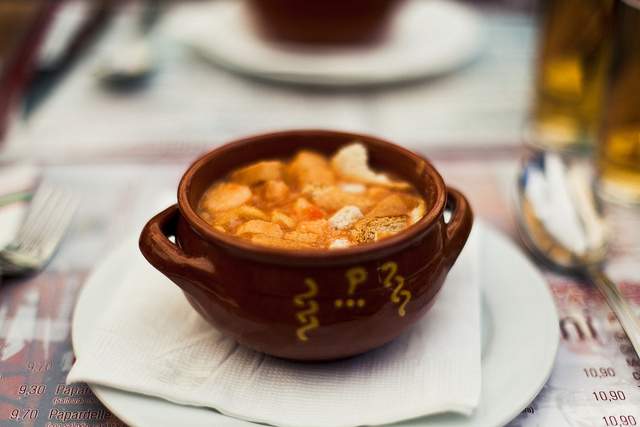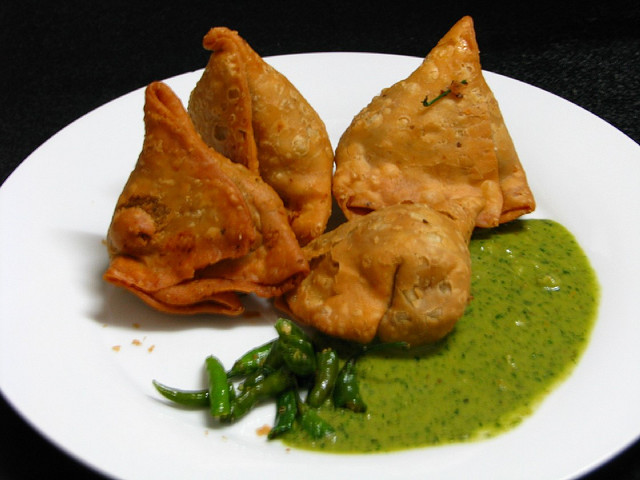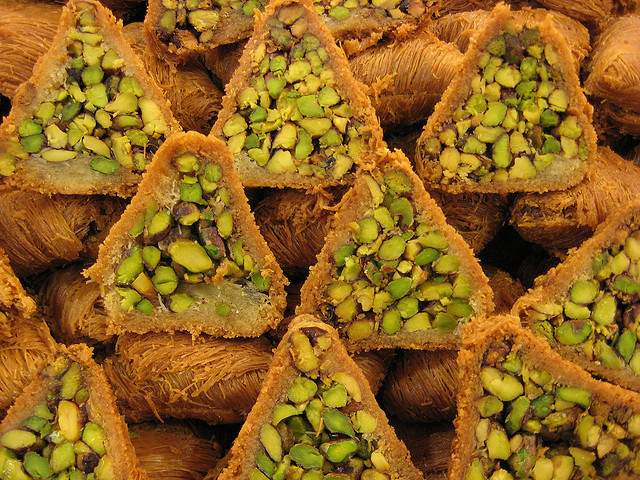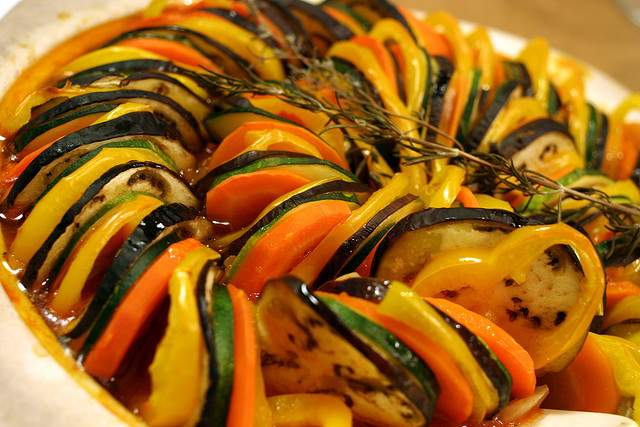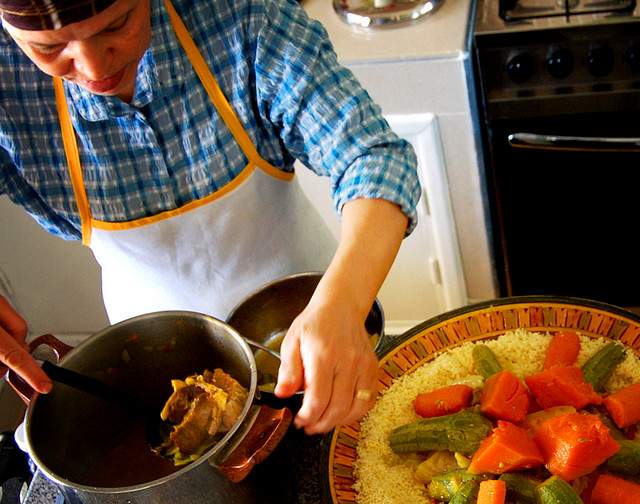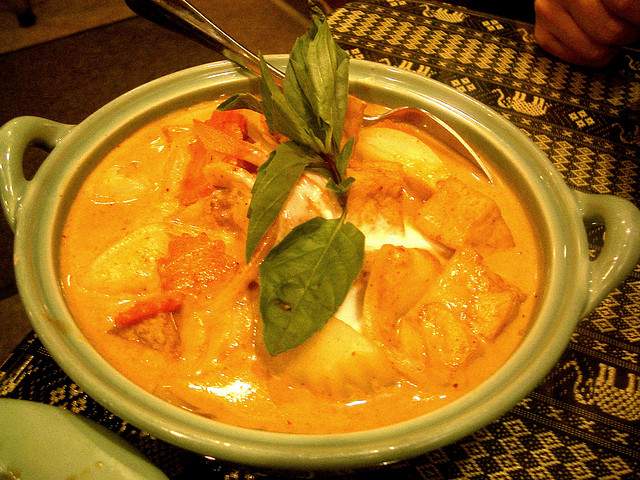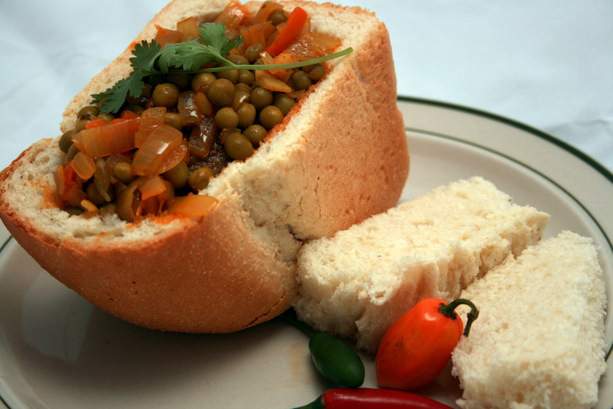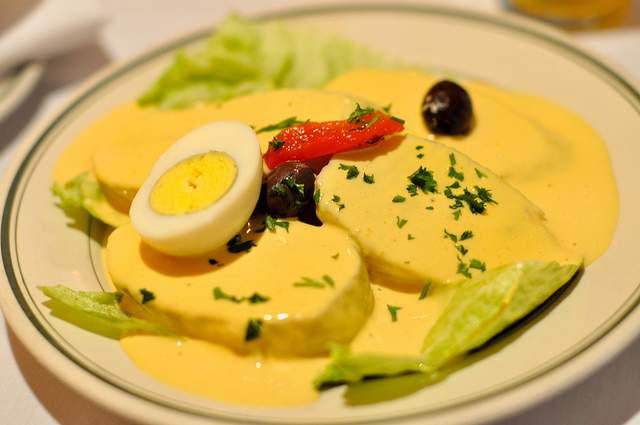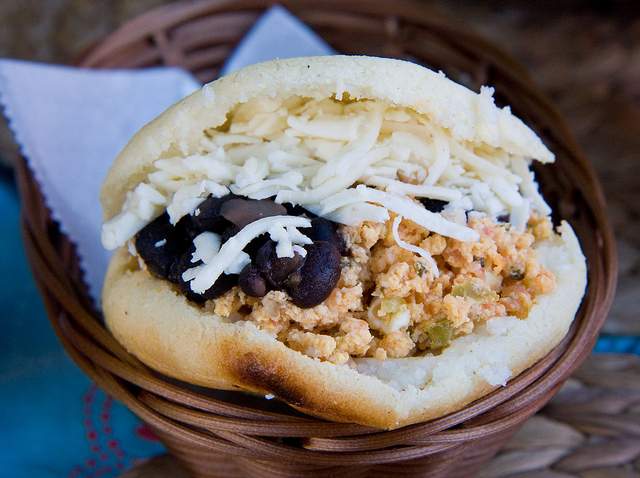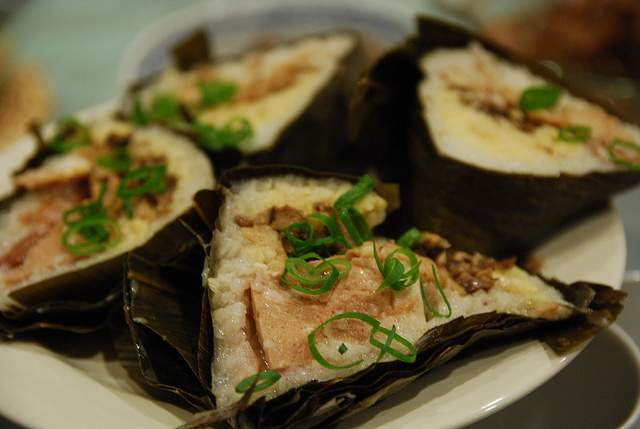Food and travel go hand in hand. At first sight, it may appear that vegetarian options limit where you can eat and travel to. But in fact, there is an entire niche market that has developed around vegetarianism. Not only are there destinations that are specifically rich in veggie foods, but there are also countries that may on the surface seem to be meat-heavy but in fact offer plenty of lesser-known vegetarian dishes. Whether you are vegetarian or not, here is a selection of mouth-watering vegetarian dishes that represent different local cuisines from all over the world. Read the story behind each dish below.
1. Spanish gazpacho
Gazpacho is a cold raw vegetable soup including tomato (the main ingredient), onions, cucumber, bell peppers, garlic, olive oil, vinegar, stale bread, herbs and water. Its roots date back to ancient times, possibly to the time when the Moors arrived in Spain or to the time of the Romans and their addition of vinegar. It became part of the Spanish cuisine of Andalucia, especially Córdoba and Sevilla. Nowadays, you can get great gazpacho in almost all Spanish cities and towns.
Tradition also has it that you add guarnicion, meaning garnish, which includes croutons and cut tomatoes, cucumbers, onions, and bell peppers. There are also modern variations that come in diverse colors and often replace the tomatoes and bread for avocados, cucumbers, parsley, watermelon, grapes, meat stock, seafood, and other ingredients.
>> Find out what to eat in Madrid
2. Indian samosa
Samosas are triangular, semilunar or tetrahedral stuffed pastry shell. The stuffing can vary, and though some versions include ground lamb or chicken, the vegetarian version typically includes spiced potatoes, onions, peas, coriander, and lentils. The shape, size and consistency of the pastry may also vary, though typically it is a triangle shape. Generally speaking, samosas are served as appetizers and with chutney. Samosas have been popular in South Africa for centuries, most probably originating in Central Asia and were brought to India by Muslim traders and soldiers.
>> Read about things to do in India
3. Turkish baklava
Baklava is a rich, sweet pastry, whose layers are filled with chopped nuts that are sweetened with honey or syrup. The origins of this dessert are unclear. Many ethnic groups have claimed baklava as their creation, but the strongest evidence is that the dessert is a food of Turkish origin. To be exact, it is said that the baklava’s current form was developed in the imperial kitchens of the Topkapı Palace in Istanbul. Other claims about baklava’s origins include: that it dates back to ancient Mesopotamia, and was mentioned in a Mesopotamian cookbook on walnut dishes; that al-Baghdadi describes it in his 13th-century cookbook; and that it was a popular Byzantine sweet.
Regardless of where baklava really originated, you can get delicious versions at many coffee shops in Istanbul. If you’re in New York, you can also get a very tasty baklava at the Hungarian pastry shop near Columbia University.
>> Read about things to do in Turkey
4. French ratatouille
The word “ratatouille” originates from the French verb “touiller,” meaning to toss food. Back in the day, it was a poor farmer’s meal, prepared in the summer with whichever vegetables were being harvested. In its simplest form, it would include zucchini, tomatoes, green and red bell peppers, onions and garlic, all tossed and sauteed in olive oil. Nowadays, eggplants are frequently added to the mix.
Originally, it was served in the area around what is now Nice. Today, you can get ratatouille as a side dish accompanying many meals all over France. It is also relatively easy to make at home.
>> Read more about what to eat in France
5. Moroccan couscous
Couscous is a dish of the Berber cuisine that dominates not only Morocco, but also Tunisia and Algeria. It is made of semolina, which is sprinkled with water and rolled with the hands to form small pellets. Subsequently, these pellets are sprinkled with dry flour to keep them separate, and then sieved. Should a pellet be too small and fall through the sieve, it is rolled again, sprinkled with dry semolina and rolled into pellets again. This labour-intensive process is continued until all the semolina has been formed into tiny granules of couscous.
Traditionally, groups of women would come together and make large batches of couscous over several days. Nowadays, however, the production is largely mechanized. To taste a homemade version, head to a traditional North African restaurant and ask the chef whether he prepares the couscous himself. Usually it will be served with a meat or vegetable stew spooned over it.
>> Learn about traditional foods you can learn to cook
6. Thai Massaman tofu curry
Massaman curry is frequently referred to as “red curry” because of the red sauce that accompanies it. Though the traditional version includes beef, many people substitute that for duck, chicken, pork, or for a vegetarian version, tofu. The curry paste remains the same for all versions of the dish. Here, you can detect flavors such as coconut milk, roasted peanuts and/or cashews, and potatoes. In terms of spices, see whether your taste buds can tell the cinnamon, star anise, palm sugar, chili sauce and tamarind sauce.
The vegetarian version naturally does not include the fish sauce. Additional spices, including turmeric, cumin, cloves, and/or nutmeg may be added so that it tastes even better. While you revel in these flavors, you can travel back in time. Rumors say that Indian Buddhist monks came over to Thailand to a palace feast honoring King Rama I, bringing him curry. This happened all the way back in the 18th century.
7. South African bunny chow
Bunny chow is fast food, South African style. Often referred to as simply “bunny” or “kota” (meaning “quarter”), it consists of a hollowed out loaf of bread filled with curry, a tradition that originated in the Durban Indian community in the 1940s approximately. Though the exact origins remain up for debate, one story says that a restaurant run by an Indian caste called Banias first created the dish as a way to serve take-away food to excluded people during Apartheid. Back then, Indians were prohibited to enter certain shops and cafes. Bunny chow could be served fast and through back windows. Another story has it that Indian migrant workers who worked on the sugar cane plantations used the hollowed out loaf of bread as a convenient way to transport their vegetarian curries to the field.
Regardless of where it exactly originated, the bunny chow is still a delicious fast food that travelers can enjoy on-the-go. The dish is sold at numerous small take-aways and Indian restaurants throughout South Africa. In fact, each September, various entrants compete for the title of top bunny maker at the Bunny Chow Barometer event held on the south bank of the Mgeni River, just above Blue Lagoon.
8. Mujaddara from the Middle East
Mujaddara is a Middle Eastern dish consisting of cooked lentils, groats, wheat or rice, and garnished with roasted onions that have been sauteed in vegetable oil. It is equally good hot or cold, and can be served on its own or with other vegetables and side dishes. Fund in Syrian, Lebanese, Palestinian, Jordanian, north Saudi, and Israeli diets, it is popular among Jewish communities throughout the Middle East, who usually eat it twice a week: hot on Thursday evening, and cold on Sunday.
Even though it used to be viewed as a poor person’s dish, it is now welcomed as a high-protein, balanced healthy food by travelers. You can try two variations: yellow, which uses red split lentils, and brown, which uses green lentils.
>> Discover destinations for great street food
9. Peruvian Papa a la Huancaína
“Papa a la Huancaína” literally means Huancayo style potatoes, Huancayo being a city in the Peruvian highlands. Those who know German Kartoffelsalat might think this is the Peruvian equivalent. Papa a la Huancaína is a boiled potato salad, covered with a Huancaína sauce, which is spicy and creamy. As it is very easy to make and served cold, the dish has become an integral part both of everyday as well as holiday cuisine. The Peruvians usually eat it as an appetizer, serving it cold over green salad and at times, including black olives, corn and hard-boiled egg as garnishing.
If you want to take a typical snack to go, this dish is ideal. Pick it up at a traditional restaurant, or try your hand at the recipe yourself and have a delicious picnic.
>> Get vegetarian travel tips for South American
10. South American arepas
If you like Mesoamerican tortillas, chances are that you will like arepas, too. Arepas are traditional breads of Colombia, Venezuela and other Latin American countries. They can be made either with cornmeal or flour. Depending on the region and what they will be used for, arepas can be fried, boiled, baked or grilled. Though you can eat them on your own, tradition has it to top or fill them with other foods. Again, this will depend on the region, but the usual topping or filling will be savory and can include anything from meat, fish, shrimp, chicken, eggs, tomatoes, salad, and/or cheese. In other areas, you may find sweet toppings, such as honey, for example. There are so many variations that you can try a different arepa just about every day during your travels.
11. Chinese zongzi
Zongzi, also sometimes simply called zong, is a traditional Chinese dish that consists of glutinous rice stuffed with different fillings, wrapped in bamboo or reed leaves, and cooked by steaming or boiling. While in northern China, the zongzi are relatively tetrahedral, in southern China, they are more cylindrical. The ability to neatly wrap a zongzi, along with the recipe, is passed down through families. In fact, preparing zongzi is conventionally a family event where every member helps out. Moreover, zongzi are traditionally eaten during the Dragon Boat Festival, which commemorates the death of Qu Yuan, a famous Chinese poet.
Qu Yuanun successfully attempted to warn his king and countrymen against the expansionism of their Qin neighbors. When the Qin general Bai Qi conquered the Chu capital Yingdu in 278 BC, Qu Yuan grieved so much that he drowned himself in the Miluo river. Legend has it that packets of rice were thrown into the river to prevent the fish from eating the poet’s body. As you bite the leaf-wrapped rice, you can vicariously become part of the rich Chinese history and family tradition.
>> Read about strange delicacies from around the world
12. Indonesian ketupat
Ketupat, also referred to as packed rice, is a kind of dumpling that originated in Brunei, Indonesia, Malaysia, the Philippines and Singapore. Specifically, it is prepared with rice that has been wrapped in a woven palm leaf pouch and boiled. When the rice cooks, the grains expand to fill the pouch, compressing the rice. Traditionally, ketupat is served with rendang or as an accompaniment to satay (chicken or beef or lamb in skewers) or gado-gado (mixed vegetables with peanut sauce). The most typical time to have ketupat is at open houses on festive occasions, such as Idul Fitri in Indonesia. During these festivals, you can become part of a rich celebration not only of Indonesian food, but of Indonesian culture as a whole.
>> Check out some strange fruits from Asia
Read more about food from around the world:
- 8 of the Best American Small Towns for Foodies
- Unusual Snack Foods From Around the World
- Four Foodie Road Trips in the US
- What to Eat (and When) Around the World
What’s the most veg-friendly country you’ve been to?
Photos by: keosh, Kirti Poddar, alixanaeuphoria, Snowy******, Jack Fussell, Arnold Goodway, prideandvegudice, powerplantop, gsz, ruurmo, Miuki, Sham Hardy
